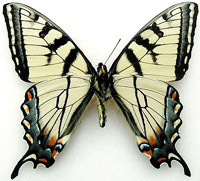Lepidoptera Survey, International

The Taxonomic Report of the International Lepidoptera Survey
Date of this Version
12-28-2001
Document Type
Article
Citation
Taxonomic Report of the International Lepidoptera Survey (December 28, 2001) 3(5): 1-6
Also available at https://lepsurvey.carolinanature.com/ttr/ttr-3-5.pdf
Abstract
Summary
General. Serpentine barrens are generally low in biotic diversity. However, these barrens are known to frequently harbor unusual species of plants and animals not usually found elsewhere. A survey was conducted from May 4 through October 2, 2001 in and around the Buck Creek Barrens located in Clay County, North Carolina, United States to document the butterfly and skipper taxa present at this location and their status. The site was visited 15 times during this period with at least two visits each month except September and October. A total of 76 different taxa were located with another 14 being likely (90 total). Two new state records were recorded, one new mountain record and several unusual species. One of the two new state records is an undescribed species and the other a possible undescribed subspecies.
Species status. Throughout the southern and eastern United States, the 2001 season was characterized by unusually low numbers of most species. In many areas even usually common species were found in low numbers. Because 2001 was an unusual year for population density, it is not possible to give an accurate assessment of the “normal” levels for many taxa found in the 2001 survey. But because the primary researcher is an expert field lepidopterists with several years of experience with western North Carolina taxa, an educated projection is given for most taxa recorded.
Barrens area. It is our opinion that the barrens area once supported a much more robust and diverse butterfly and skipper fauna then it does today. We find the area in poor health and in much need of increased management and in a manner that caters more to invertebrates. Burns are needed but should be limited in size as the rarer species seem to not be evenly distributed throughout the barrens area. More and smaller burns are recommended in a grid manner rather than on entire slopes at a time. We also recommend the thinning and removal of trees on the periphery of the serpentine areas to help provide a buffer and transitional perimeter.
Based on work conducted by the International Lepidoptera Survey for the United States Forest Service, May–October 2001.


Comments
Copyright 2001, International Lepidoptera Survey. Open access material
License: Creative Commons Attribution-ShareAlike-NonCommercial 4.0 International (CC BY-SA-NC 4.0 International)